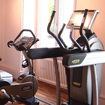Older and wiser? Speaking and Reading
Upper-intermediate level
Description
Materials
Main Aims
-
To provide gist and detailed reading practice using a text about Trading Ages in the context of Becoming old
Subsidiary Aims
-
To provide fluency speaking practice in a Debate in the context of Stereotype
Procedure (37-46 minutes)
1. Project the quote 2. Ask students to discuss it in pairs to see their partner agrees or not 3. Get feedback from some students
1. Project two pictures: Turkish teens and the old 2. Ask them to think of words to describe them in pairs 3. With students brainstorm some words 4. Elicit words which can be blocking from exercise 1a
1. Give students some simplified definition 2. Give them the cut-ups & ask them to match with the words on the cut-up in pairs 3. Ask early finishers to put the right cut-up with a definition on the board 4. Ask them some CCQs to make sure they know the meanings of the words plus which one is positive or negative 5. Ask them to match the words with the right category "teens, the elderly or both" in groups 6. Ask early finishers to match the right cut-up to its category
1. Pre-teach "stereotype & to conform" using visuals 2. asking CCQs to make sure students know the meaning of the words 3. Project the questions 4. Students discuss the questions in groups 5. Some students share their idea with the whole class
1. Project the photo of the people with heavy makeups 2. Ask them to tell the class what they think has been done to them why 3. Students read the first paragraph quickly and check their answers in pairs
1. Project the photos to pre-teach five vocabularies: wig, contact lenses, false teeth, wrinkled skin, eyesight 2. Ask them to find these items in the text in pairs 3. Students who find the answers write them on the board 4. Project the questions in exercise C 5. Students guess what happens in the article in pairs 6. Some students share their guess with the class
1. Give students the rest of the article 2. Ask them to it individually to find the answers to exercise C 3. Students check their answers in pairs 4. Some students share their answer with the class 5. Project the answers 6. Give them the questions in exercise E to answer, obviously alone 7. Students check their answers in pairs 8. Early finishers write the answers on the board 9. Project the answers
1. Project the statements in exercise 3C 2. Regroup students 3. Ask them to talk about questions in groups 4. Ask random students to share their views about the statements.

